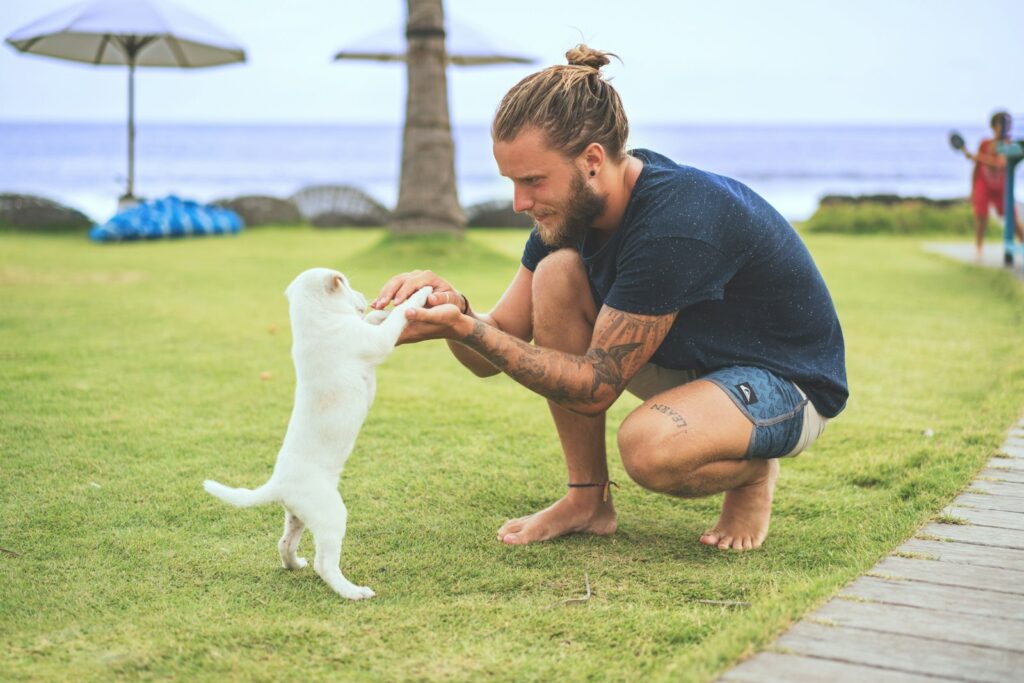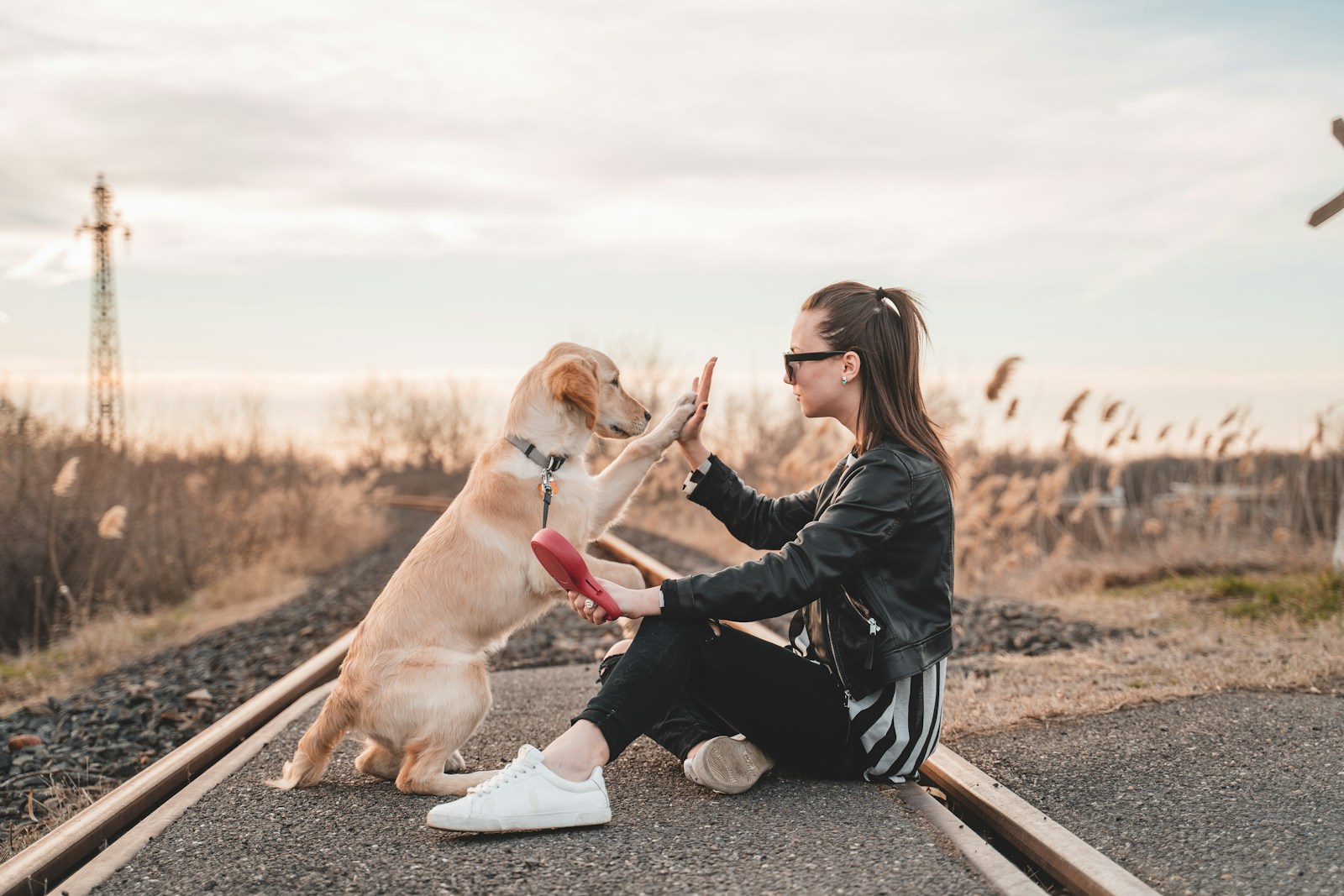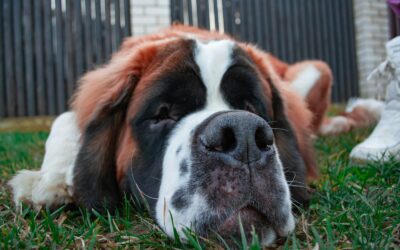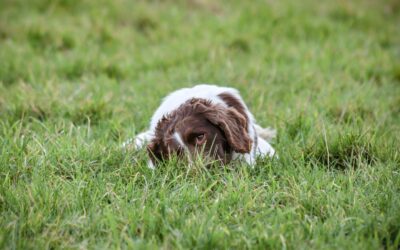Dogs are more than just our pets; they are loyal companions, constant sources of joy, and cherished members of our families.
But have you ever stopped to wonder ‘why do dogs love humans so much?’ The emotional bond that a dog loves to share with its owner is profound, and understanding this bond can help us reciprocate their affection through proper care and attention.
This post dives into the fascinating science, history, and emotional depth of the relationship between dogs and humans. From evolutionary adaptations to oxytocin boosts, we’ll explore why dogs love us and how this love shapes both their lives and ours.
The Evolution of Canine Affection
The bond between humans and dogs didn’t happen overnight—it’s the result of tens of thousands of years of evolution.
Scientists estimate that dogs were domesticated around 20,000 to 40,000 years ago. These former wolves began living with humans, adapting to our way of life, and eventually becoming the domesticated companions we know today.
Here’s how evolution played a role in building their love for us:
- Dependence on Humans: Early dogs discovered that staying close to humans meant easier access to food, shelter, and protection. Over time, they evolved behaviors that made them more social and affectionate, traits that endeared them to us.
- Biological Adaptations: Unlike their wolf ancestors, dogs developed the ability to interpret human emotions and body language. This makes them exceptional at understanding and responding to us in ways other animals can’t.
- A Two-Way Street: Humans began to rely on dogs, too—whether for hunting, guarding, or simply companionship. This mutual dependence laid the foundation for a bond fueled by love and loyalty. Dog owners experience this deep emotional connection, as dogs express love and affection towards their owners, illustrating the mutual relationship and the innate social needs both species fulfill when together.
Why Dogs See Humans as Their Pack
Many scientists believe that dogs view humans as part of their pack, and a dog’s love is most vividly expressed through their happiness during play and shared experiences with their humans. Just like they would bond with other dogs, they bond deeply with us.
The love they show—whether it’s through cuddles, wagging tails, or goofy grins—is their way of expressing loyalty and acceptance into your “pack.”
Canine Emotions and Attachment
Dogs are emotionally intelligent beings, capable of recognizing and responding to human emotions in remarkable ways. Dogs’ brains are wired to process affection and emotions, with areas like the caudate nucleus responding positively to their owners.
If you’ve ever had a pup nuzzle you when you’re sad or wag their tail excitedly when you’re happy, you’ve experienced this firsthand.
How Dogs Interpret Human Feelings
Dogs can pick up on subtle cues in our tone of voice, facial expressions, and behavior. This emotional sensitivity allows them to empathize with us—whether it’s comforting us during tough times or sharing in our joy.
A Family Member’s Love
What sets dogs apart from other animals is their unconditional love. They don’t judge, hold grudges, or ask for much in return. For them, being close to their human is its own reward.
Over time, this emotional attachment grows, mirroring the deep connection humans have with loved ones.

The Role of Oxytocin in Dog-Human Bonding
Enter “the love hormone.” Oxytocin is a chemical in the brain that promotes feelings of trust, bonding, and attachment. It plays a huge role in the incredible connection between dogs and humans.
How Oxytocin Works
When you pet your dog, gaze into their eyes, or even spend quiet moments together, both you and your dog experience a release of oxytocin. This mutual hormonal response strengthens your bond, making interactions deeply fulfilling for both parties.
A study conducted by Japanese researchers revealed that dogs’ oxytocin levels increase during positive interactions with their owners. This same chemical reaction helps form strong social bonds—similar to how humans form connections with loved ones.
The Anti-Stress Effect
Oxytocin doesn’t just make dogs feel good; it reduces stress and anxiety for both them and their humans. This is one reason why spending quality time with your dog feels so calming—they’re literally making you happier and healthier!
Deciphering Canine Body Language
Dogs are masters at non-verbal communication. They rely on body language to express affection, trust, and their overall emotional state.
Here’s how to interpret some common signs of doggy love:
- Eye Contact: When a dog maintains eye contact with you, it’s their way of connecting and showing trust. It’s the same mechanism that forms bonds between parents and their children.
- Tail Wagging: A happily wagging tail is the ultimate sign of joy. Whether they’re greeting you at the door or seeing you after five minutes, that enthusiastic wag shows how much they adore you!
- Curling Up Close: When a dog snuggles up or leans against you, it’s a sign of deep comfort and trust. It’s their way of saying, “You’re my safe place.”
- Nuzzles and Paws: Whether it’s a gentle nudge or placing their paw on your hand, these gestures are pure, unfiltered affection.
Learning to recognize and respond to your dog’s body language deepens the bond you share, reinforcing their love for you.
Strengthening the Human-Canine Bond
While dogs are naturally inclined to love us, the bond you share can always be nurtured and strengthened.
Ways to Show Your Dog Love
- Spend Quality Time Together: Whether it’s a long walk, a play session, or simply lounging on the couch, dedicating time to your dog solidifies your connection.
- Engage in Social Interactions: Bring your dog to parks, training classes, or events like Snouts & Stouts (an indoor dog park that’s perfect for furry playdates with other dogs).
- Treat Them Well: Regularly provide food, toys, and affection. Consistency and care build trust and show them they’re valued.
- Pay Attention to Their Needs: Listen to what your dog’s body language is telling you. Whether they need space or extra cuddles, being attentive strengthens your bond.
Make Every Moment Count
Your relationship with your dog is a partnership. By showing them love and respect, you create a fulfilling, lifelong connection that benefits you both.
The Power of Play in Building Bonds
Playtime is more than just fun—it’s a way for dogs to express love and enjoy life with their human companions. Daily play keeps dogs happy, healthy, and mentally stimulated. Whether it’s a game of fetch, tug-of-war, or exploring new trails, these moments are opportunities for bonding and joy.

A Lifelong Connection of Unwavering Loyalty | Why Do Dogs Love Humans
Dogs love us unconditionally, but they also depend on us to meet their needs and make them happy. Providing them with proper care, a sense of routine, and plenty of affection ensures that their love for us remains unwavering.
Explore life with your furry friend, cherish the small moments, and treat them to the care they deserve. Their loyalty, affection, and joy make the world brighter—not just for you, but for all the creatures they touch.




